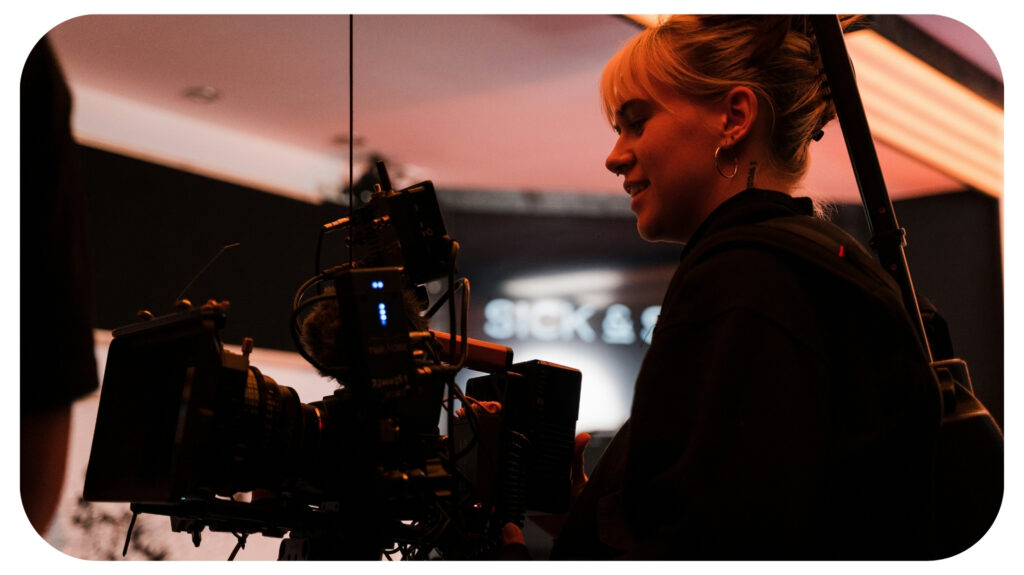Exploring Women’s Impact Behind the Camera with Insights from Dana Guerin

Every shot, frame, and scene in film and photography comes to life because of the person behind the camera. While actors and on-screen talent get much of the spotlight, the creative force holding the lens often shapes the story in ways not always clear to those watching.
For years, women have been underrepresented in these key roles, but their influence reaches deep, stretching across many genres, styles, and eras. Seasoned film producer Dana Guerin unpacks the important impact of women on the work that happens behind the camera on films of every type.
Early Trailblazers and Their Unique Lens
From the early days of film, women played key roles in shaping visual storytelling. Alice Guy-Blaché was among the first filmmakers, not just as a woman but as a visionary. She directed and produced hundreds of films while running her own studio in the early 1900s. Her work set standards for narrative form and editing.
In Hollywood’s golden age, Dorothy Arzner broke barriers by directing films in an industry that held tight to its old rules. She introduced the first boom microphone, changing the way sound captured emotion. These pioneers often worked twice as hard for recognition, setting the groundwork for those who followed.
“When women take the director’s chair or handle the camera, they shift how stories look and feel,” says Dana Guerin. “Many women director-photographers seek truth in personal detail. Their films often focus on complex relationships and the textures of life. This approach adds layers of meaning and depth.”
The female gaze invites viewers to see the world through a different lens. It changes who gets seen and heard in stories. This shift challenges old patterns while bringing new voices and fresh ideas. It shows that storytelling is not one-size-fits-all. When women shape images, audiences feel the difference, often in subtle ways—a lingering close-up, a pause, or a slice of honest dialogue.
Breakthroughs in Cinematography by Rewriting the Rules
The field of cinematography stayed closed to women for decades. Technology, tradition, and industry networks often created barriers. Even so, women have broken through with creative ideas and technical skill.
Rachel Morrison became the first woman nominated for a cinematography Oscar for Mudbound in 2018. Her work created a visual language of its own as it was rich, moody, and filled with emotion. She proved that talent, not gender, guides the camera.
Ellen Kuras and Mandy Walker both built careers on films that balance style with storytelling. Their command of light and perspective changes what audiences expect from visual storytelling. They embraced both digital and film to tell stories in ways that feel real and alive.
Notes Guerin, “Women directors behind the camera but at the center of production, show audiences that stories told by women have universal reach.”
Directors like Ava DuVernay, Greta Gerwig, and Chloé Zhao put their mark on film with brave choices and open storytelling.
Ava DuVernay uses visual language to draw out truth and empathy. Her films, like Selma and 13th, push viewers to confront issues steeped in race and justice. Even documentary work like hers depends on the steady control of someone who knows how to shape an image and build a scene.
Greta Gerwig’s films shine with honesty and wit. She reclaims coming-of-age stories for women, turning small moments into rich drama or tender humor. Her clear eye means audiences pay attention to the details, a glance, a gesture, or the way two characters fill a frame together.
Chloé Zhao, with her gentle, poetic approach, captures the American West and its people in a new light. Her work on Nomadland strips away artifice, letting landscapes and faces share equal space in the story.
Shifting Trains, Remaining Barriers, and Global Impact
Even with these successes, women face challenges behind the camera. Industry networks still favor men in some key roles. Bias, both obvious and hidden, can close doors to opportunity. Pay gaps and limited funding for women-led projects add to the hurdles.
Despite this, mentorship programs, women’s film festivals, and advocacy groups make headway. Young filmmakers can now see women in the top spot. Initiatives like the 4% Challenge urge studios to hire more women directors. Change happens step by step, with each success raising the next generation.
The influence of women behind the camera is not limited to Hollywood. Across the world, filmmakers create work rooted in their own cultures and communities. Nadine Labaki in Lebanon tells powerful stories of childhood and poverty. Mati Diop explores memory and migration in West Africa.
Streaming services bring these stories to global audiences, changing both who sees them and who gets to make them. This broader exposure helps break down stereotypes and adds complexity to the film world. Audiences now expect—and demand—diverse points of view and authentic narratives.
“Who holds the camera matters. Behind every frame, someone chooses what to include and what to leave out,” says Guerin.
When women shape these choices, stories shift in content and style. Female directors, cinematographers, and editors uncover themes often skipped or skimmed in male-driven work. Stories made by women often highlight overlooked lives and voices. They build scripts with women in complex leading roles, giving depth to both character and world.
These changes ripple out, shaping how viewers see themselves and their society. Art has the power to create empathy and challenge bias. When women shape our visual stories, audiences grow in awareness and understanding. Little by little, these moments chip away at old habits and beliefs.
Looking Ahead: A Story Still Unfolding
Change takes time, but each year brings more women into key roles behind the camera. Film schools now see higher numbers of women students, leading to more new voices. Old barriers still stand but weaken with every rising star.
Audiences also hold power. Viewers who seek out diverse stories and support women-led projects play a part in shifting the balance. Choice at the box office, on streaming apps, or in festival attendance sends a clear message to studios and funders.
This story is not finished. Women behind the camera are not a trend, but an essential part of storytelling’s past, present, and future. Their vision brings both beauty and truth, reminding audiences that the person behind the lens shapes what the world sees.
Women behind the camera continue to shape visual storytelling in ways both subtle and sweeping. From pioneers who set early standards to modern directors and photojournalists who redefine genres, their work brings fresh vision, strong voices, and new stories to the world. As more women step behind the lens and take creative lead, the culture of film and photography will reflect deeper truth and greater richness. Their continued presence enhances storytelling and changes how audiences see and experience the world.
Recommended For You
How To Choose The Best Online Casino Sites
Most Inside
Most Inside offers high-quality recommendations and valuable updates to enhance all aspects of your life, providing premium guidance and enriching experiences.




